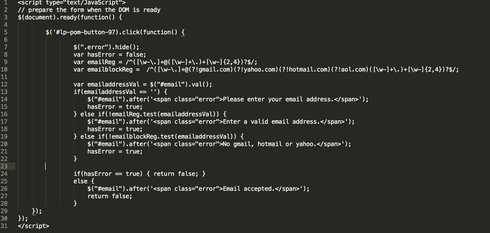I’m trying to incorporate an extra form validation function that will display an error if users try to submit form data with a free email provider domain in the ‘Email’ input field.
I can do this using an iframe, but I want to do it from within Unbounce since Unbounce uses the MailChimp API and can be set up to not send an “Opt-In” email.
Below is the script I’ve been trying to incorporate but it doesn’t seem to work. I think it’s running into a conflict with the existing validation scripts. Is there a way to add this function to the included form validation, or a way to remove the included form validation entirely?




